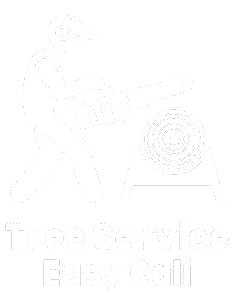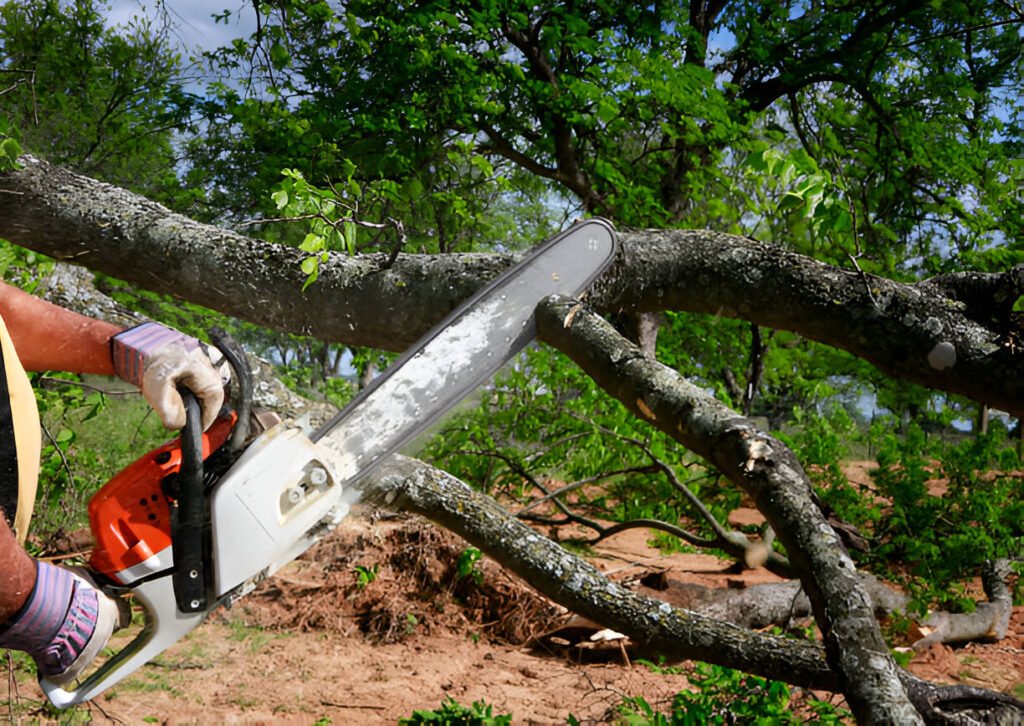Trees add beauty, shade, and value to your property—but when they become damaged or unstable, they can also pose serious risks. Storms, disease, or unnoticed structural problems can quickly turn a healthy-looking tree into a safety hazard. That’s when emergency tree service becomes essential.
In this guide, we’ll cover the most common signs that signal it’s time to call a professional tree care company right away.
1. A Tree Is Leaning Suddenly
A gradual lean over years may not be an immediate concern, but if your tree begins leaning noticeably in a short period, it’s a red flag. A sudden lean often indicates root damage, soil instability, or structural failure within the trunk. Left unchecked, the tree could topple without warning.
When to act: Call emergency tree service immediately if the lean is new, especially after a storm or heavy rain.
2. Cracks or Splits in the Trunk
Deep cracks or splits in the trunk weaken a tree’s structural integrity. These wounds may not only invite pests and disease but also make the tree more likely to break under its own weight or in high winds.
When to act: If you notice large vertical cracks or see that one side of the trunk looks unstable, don’t wait—an arborist should inspect it right away.
3. Hanging or Broken Branches
Broken branches hanging precariously are one of the most obvious signs you need emergency service. These limbs can fall at any time, putting people, vehicles, and property at risk. Even if the branch hasn’t fallen yet, it may be loosely attached and only need a slight gust of wind to drop.
When to act: Call professionals to safely remove dangerous branches before they cause injury or damage.
4. Tree Damage After a Storm
California weather can bring high winds, heavy rains, and even wildfires in some regions. After a major storm, it’s common to see trees with uprooted roots, snapped limbs, or storm-split trunks.
When to act: If your tree shows signs of structural failure, or if large branches are tangled in power lines, call emergency services right away.
5. Signs of Root Damage
Roots anchor your tree. When they’re damaged, the entire tree can lose stability. Signs include:
- Soil heaving or lifting at the base of the tree
- Exposed or broken roots after erosion
- Mushrooms or fungal growth at the base (a sign of rot)
When to act: Root damage is serious. If you see any of these symptoms, a tree service professional should assess the risk immediately.
6. Hollow or Decayed Trunk
A hollow trunk might not always kill a tree, but it does reduce its strength. Decay inside the trunk or branches can spread unnoticed until it’s too late. Trees with significant internal rot can fall even without strong winds.
When to act: If more than one-third of your tree’s trunk is hollow or decayed, emergency removal may be necessary.
7. Proximity to Power Lines
Any time a tree or large limb is in contact with or dangerously close to power lines, it’s a serious hazard. Not only can this cause power outages, but it also presents electrocution risks.
When to act: Call emergency tree service immediately. Never attempt to trim or remove branches near power lines yourself.
8. Dead or Diseased Sections
If you notice large sections of your tree that are dead, leafless, or brittle while the rest looks alive, this imbalance may mean disease or pest infestation. These weakened sections are more likely to break.
When to act: Rapidly spreading disease or large dead sections should be evaluated urgently by an arborist.
9. Trees Threatening Structures
If a tree is leaning toward your home, garage, or fence, or if large branches extend directly over your roof, it could cause thousands of dollars in damage if it falls.
When to act: Don’t wait until a limb falls through your roof—schedule emergency tree service to prevent disaster.
10. Uprooted or Partially Uprooted Trees
Sometimes storms or flooding can cause a tree to shift in the soil, leaving roots exposed and the trunk unstable. Even if the tree hasn’t completely fallen, partial uprooting means the tree is at high risk of collapse.
When to act: Treat this as an emergency. A partially uprooted tree rarely recovers and should be removed safely.
Why Call Emergency Tree Service?
Trying to remove a dangerous tree yourself is risky. Professional arborists have the training, tools, and safety equipment to:
- Remove hazardous trees or branches safely
- Prevent property damage and personal injury
- Handle situations involving power lines
- Provide expert recommendations on whether the tree can be saved or must be removed
Final Thoughts
Trees can enhance your landscape for decades, but when they become unstable, they turn into potential hazards. Recognizing the signs you need emergency tree service—like sudden leaning, broken branches, storm damage, or root issues—can help you act quickly and prevent costly accidents.
If you suspect a tree on your property poses a risk, don’t wait. Call a certified tree care professional to keep your home, family, and community safe.

